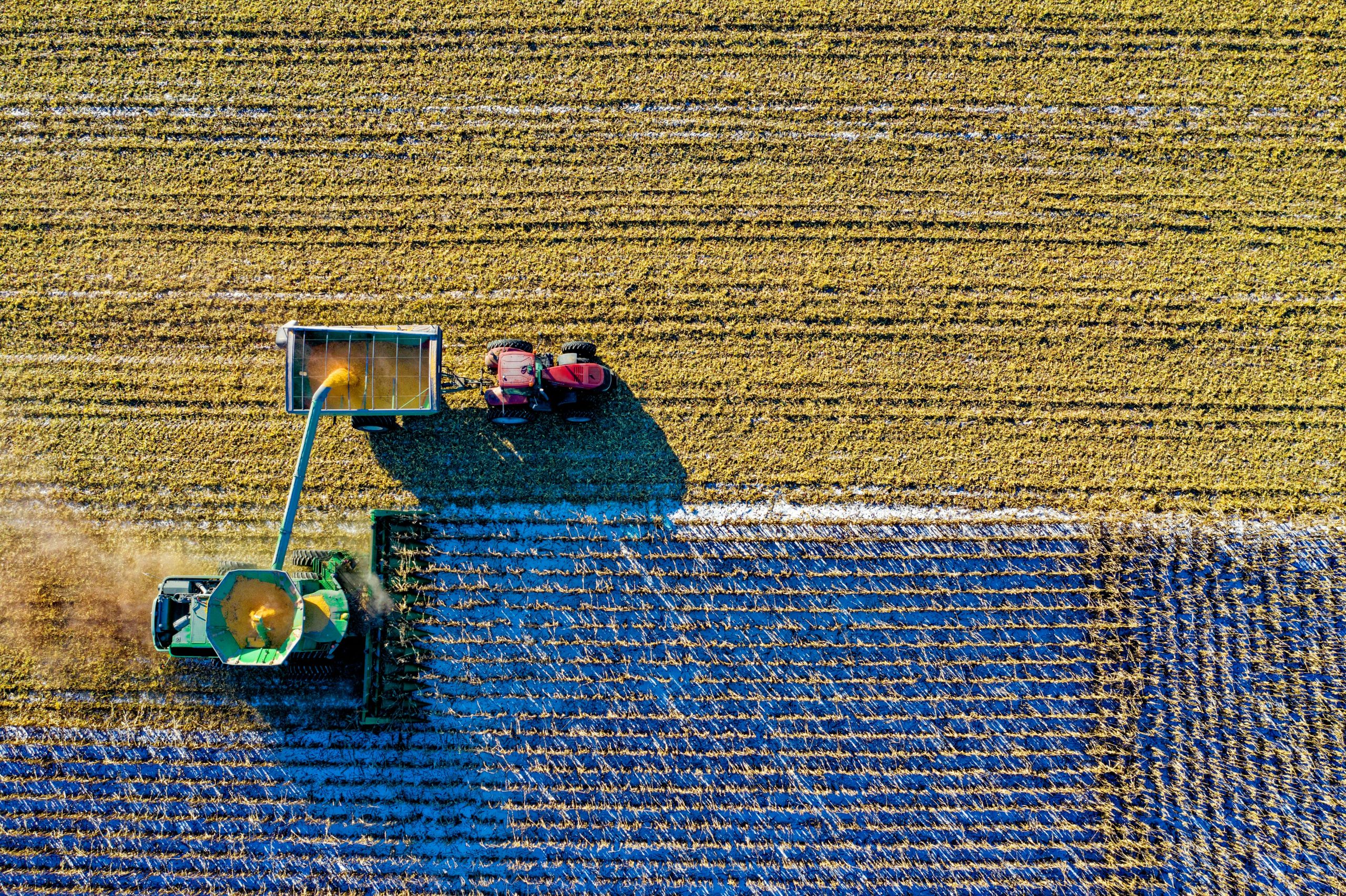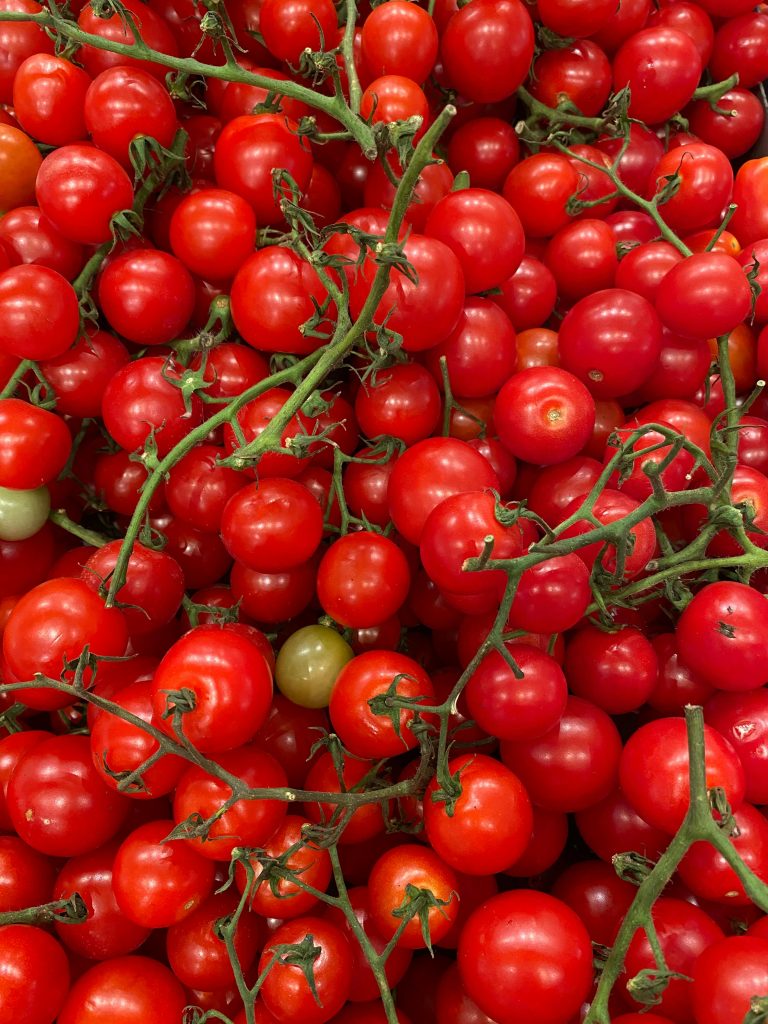The Future of Food & Agriculture
1 Sowing Solutions
How Gene Editing Can Help Utah Agriculture Through Modern Challenges
Trey Lauritz Smith
Gene editing bridges scientific innovation with the enduring spirit of Utah’s agricultural community, ensuring that producers can continue to feed the state and beyond. Gene editing is not just a tool for the future—it is a necessity for the present.

Author Biography
As a plant science major at Utah State University, Trey Lauritz Smith’s passion for sustainable agriculture is deeply rooted in his upbringing in a rural farming community in Cache Valley. His hands-on experience with various projects, from woodworking to baking, has instilled in him a profound understanding of the challenges faced by farmers. With a love for music and a desire to contribute to agricultural innovation, Trey is uniquely positioned to bridge the gap between academic research and practical farming.
Writing Reflection
Writing this essay allowed me to connect my personal background in agriculture with my academic interest in gene editing. The most challenging part was addressing opposition to gene editing in a balanced and respectful way, but I learned how important it is to consider different perspectives. I chose this topic because I’ve seen firsthand how climate change affects Utah farmers. I hope readers come away with a deeper understanding of how gene editing can support sustainable agriculture in our state.
This essay was composed in December 2024 and uses MLA documentation.
Introduction
Utah, the second driest state in the nation, has always faced a multitude of challenges regarding agriculture. However, that has never stopped industrious agriculturalists from persevering. However, heat and, therefore, climate extremes are getting worse. According to the Natural History Museum of Utah, whose temperature archive goes back decades, Utah is heating up, with temperatures rising twice as fast as the global average. This heat causes drought, increases plant disease, and reduces nutrient quality (Natural History Museum of Utah). So, how can Utah farmers continue to keep growing crops in this new extreme environment? So, how can Utah farmers continue to keep growing crops in this new extreme environment? The answer lies in the potential of gene editing, a key solution that offers hope and optimism for the future of Utah’s agriculture.
Before I explain the various benefits and ways gene editing can and is used to combat modern agricultural challenges, I will share a little about my background. I grew up in Cache Valley and witnessed firsthand the modern challenges farmers face, especially as climate extremes become more frequent. Addressing these issues has become critical. In my future career, I aim to support farmers by developing genetically enhanced crops that can better withstand these pressures, ultimately making it easier to feed the world.
I will explain the process and idea of gene editing so that it can be better understood. Medline Plus, a subsidiary of the US National Library of Medicine, explains it best: “Gene editing is a group of technologies that give scientists the ability to change an organism’s DNA. These technologies allow genetic material to be added, removed, or altered at particular locations in the genome. Several approaches to gene editing have been developed. A well-known one is called CRISPR-Cas9” (MedlinePlus). CRISPR-Cas works like molecular scissors, allowing scientists to target and cut specific DNA sequences within an organism’s genome. Once the DNA is cut, researchers can modify the genetic material by deactivating a gene, repairing it, or introducing new genetic information.
This technology has incredible potential for crop breeding and the advancement of sustainable agriculture. This technology has incredible potential for crop breeding and the advancement of sustainable agriculture. Biotechnology experts worldwide have found that CRISPR-Cas has produced modifications to improve metabolic pathways, resistance to biotic or abiotic stresses, nutritional content, yield, herbicide resistance, and other traits (Mishra et al.). I will focus on these benefits and why they are worth the use of gene editing. Specifically, I will cover how gene editing offers a promising solution to Utah’s agricultural challenges by providing increased crop resilience, improved nutritional content, a reduction in chemical usage, and the accelerated development of regional crops.
Concerns: Ethical, Environmental, and Social

Before we explore the advantages, I will address the misconceptions and push back against gene editing. The opposition is significant, citing concerns of potential ethical, environmental, and social risks. Many critics argue that gene editing, despite advancements like CRISPR-Cas, is still in its early stages and may lead to unintended consequences. In a recent publication, the FAO (Food and Agriculture Organization of the United Nations) highlighted concerns over biodiversity, such that gene-edited crops could crossbreed with wild species, reducing genetic diversity and leading to long-term ecosystem disruptions such as herbicide-resistant weeds (FAO 17). Additionally, critics and cautious researchers, such as those from a leading medical facility in Beijing, worry about the possibility of non-intended effects, producing unpredictable mutations that could impact crop safety and stability (Guo et al.).
On an ethical level, there are concerns over the accessibility and control of gene-editing technologies. Most of these technologies are patented by large businesses, sparking fears about corporate monopolization of seeds and genetic resources. Such control may increase dependency among small farmers (FAO 21). Utah is full of small farmers, and 79% of farming operations in the state are family-owned, according to the Utah Census of Agriculture (“2022 Census by State – Utah”). This high concentration of small farmers means there could be a serious problem if these technologies are retained only by large entities. This dynamic could deepen the economic disparities within agriculture, favoring large, wealthy businesses while marginalizing smallholders.
Many consumers experience a general unease regarding gene-edited foods, with many viewing gene editing as an unnatural modification similar to GMOs or genetically modified organisms. Many consumers experience a general unease regarding gene-edited foods, with many viewing gene editing as an unnatural modification similar to GMOs or genetically modified organisms. Studies by a pair of genetics and sociology experts at Iowa State University indicated that consumer skepticism, especially regarding health impacts, could affect public acceptance and sales of gene-edited crops (Cummings and Peters). Thus, while gene editing has immense potential, these ethical, environmental, and social concerns present complex obstacles to its widespread acceptance and application.
I will attempt to address each of these complex issues. While it is true that gene editing is a powerful tool and can be misused or have unintended consequences, it is important to note that gene editing is a highly precise tool that allows scientists to make specific changes to the DNA of an organism (Mishra et al.). This precision significantly reduces the risk of unintended consequences even compared to traditional plant breeding methods, which often involve introducing multiple genetic changes at the same time. Further, strict scientific review and regulatory oversight are in place to minimize potential risks. Internationally, scientists have a standard that must be met before any gene-edited crop is released to the public. Their composition and effects on well-being are evaluated for the presence of harmful substances (Movahedi et al.). This process ensures that it is safe for humans and the environment.
Now, I think it is perfectly reasonable to be concerned about the potential of corporate greed and control over gene editing technologies. However, it is important to remember that research in this field comes from a vast range of sources, including universities, the government, small biotech companies, and independent research institutes. By supporting government research, these advancements are often rolled out to the public for free or at low cost.
Public perception and acceptance are crucial for the adoption of gene-edited foods. First, gene-edited plants are not GMOs. According to the Alliance for Science, GMOs introduce genetic material from another organism to a host organism in hopes of yielding beneficial outcomes (Alliance for Science). These modifications are less precise and often face regulatory scrutiny; however, this does not mean they are inherently unsafe, just different. On the other hand, gene-edited organisms mimic natural processes by using an organism’s DNA. Public perception and acceptance are crucial for the adoption of gene-edited foods. As shown in the figure from Max-Planck-Gesellschaft, a European research institute, gene editing using CRISPR-Cas can almost seem simple (Max-Planck-Gesellschaft). In fact, the USDA deregulated gene-editing crops as they found they were equivalent and indistinguishable from conventionally bred plants (Ahmad et al.). Educating the public about the benefits and differences can dispel myths and build trust in gene-edited crops and their benefits.
How Gene Editing Crops Can Address Problems
Building More Drought- and Disease-Resistant Crops

Now that we have addressed the more well-known and critical side of gene editing crops, I want to dive into why it could change the way Utah farms among the climate challenges we face in the agricultural community. One of Utah’s most widely cultivated crops, wheat, is highly susceptible to drought and heat stress. However, as discovered by a team led by Peter Langridge, a professor of plant biology at the University of Adelaide, wheat possesses the genetic potential to develop tolerance to these stressors through the expression of dormant genes (Langridge et al.). For instance, CRISPR-Cas has been used in wheat to build resistance against heat-intensified powdery mildew. This resistance is done by “knocking out” three genes from wheat’s genome that make it susceptible to the disease (FAO 7). This process enhances wheat’s resilience while maintaining its productivity under environmental conditions. Similar targeted gene “knockouts” in corn have enhanced drought tolerance, improving yields despite arid conditions (Langridge et al.).
Soil salinity presents a critical barrier to crop production in Utah, with USU Extension stating it is the limiting factor for plant growth in Utah (Amacher et al.). Compounding the issue, soil salinity worsens the hotter it gets because the soil’s moisture evaporates, leaving more salt behind. Scientists have engineered tomatoes with increased salt tolerance using CRISPR-Cas to alter specific genetic pathways. As this technique is applied to other crops, areas that have never been able to be cultivated will suddenly open their doors to agriculture for the first time. These modifications allow the plants to grow under saline conditions, offering solutions for agriculture in saline-prone regions (FAO 6). As this technique is applied to other crops, areas that have never been able to be cultivated will suddenly open their doors to agriculture for the first time.

In an article from a group of researchers from various universities focusing on biotechnology in Lucknow, India, they emphasize how, by using CRISPR-Cas, research groups have engineered several crop systems for disease resistance, drought, salinity, and thermotolerance, both heat and cold (Kumar et al.). Gene editing’s ability to precisely target and modify stress-related genes results in crops that can endure extreme climates and adapt to changing conditions. These benefits make gene editing essential for ensuring food security in a world increasingly affected by climate change. The application of gene editing technologies in crops provides the easiest pathway for sustainable and resilient agricultural systems that address current and future challenges.
Increasing Nutritional Profiles
Gene editing has also been instrumental in enhancing the nutritional profile of crops, combatting the loss of yield and nutrition we find in our modern world. CRISPR-Cas has been particularly good at biofortification, which, according to Dictionary.com, means “the process of breeding staple crops to have higher levels of essential nutrients, either through selective breeding or genetic modification” (“Biofortification”). Through biofortification, “golden” crops have been created and edited to produce higher levels of beta-carotene, a precursor to vitamin A (Kumar et al.). This higher level allows producers to sell their products for a higher profit. It addresses critical health issues, such as vitamin A deficiency in secluded communities.
Another promising nutritional development involves reducing harmful compounds in foods. High-temperature baking of wheat, for instance, can lead to the production of acrylamide, a compound linked to cancer risks. Researchers have created wheat with significantly lower acrylamide levels through CRISPR-based “knockouts” of the asparagine synthetase gene, improving its nutritional value and health (Kumar et al.). This advancement benefits consumers’ health and aligns with public goals of reducing dietary risks.
Recently, two genome-edited crops targeted for nutritional improvement—high GABA tomatoes and high oleic acid soybeans—have been announced and released to the market by researchers at Washington State University, WSU (Nagamine and Ezura). GABA (gamma-aminobutyric acid) is a neurotransmitter with potential health benefits, including stress reduction and improved sleep, while oleic acid is a fatty acid known for its heart-healthy properties (NCBI). These crops represent a new frontier in nutritional enhancement, marking a significant step forward in crop biofortification efforts. These crops represent a new frontier in nutritional enhancement, marking a significant step forward in crop biofortification efforts. Moreover, the same study by WSU reports that 34 gene edits aimed at increasing nutrients in crops have succeeded, further showcasing the potential of gene editing in improving nutritional value (Nagamine and Ezura). These crops represent a new frontier in nutritional enhancement, marking a significant step forward in crop biofortification efforts.
A peer-reviewed study published in the Journal of Experimental Botany further highlights the potential of CRISPR-Cas in improving crop quality. Researchers demonstrated the capacity of genome editing to enhance essential micronutrients, like zinc and iron, in cereals, addressing widespread deficiencies affecting billions of people globally. This precision approach ensures that nutritional benefits are integrated into crops without compromising yield or taste (Giordano). With its ability to fine-tune nutritional properties, gene editing stands as a powerful tool to combat hidden hunger and support global health initiatives.
Reducing Reliance on Chemical Inputs
Gene editing can also help Utah agriculture reduce its reliance on chemical usage. According to the USDA agriculture census, 86% of agricultural products have had some chemical input, whether fertilizer or pesticides (“2022 Census by State – Utah”). You would likely agree with me that a lot of chemicals are going into our soil and food that can potentially last for generations and have harmful effects. Gene editing can target specific genes, helping produce crops naturally resistant to pests or more efficient at nutrient uptake, significantly lowering the need for fertilizers and pesticides (FAO 8-10). This resistance reduces the environmental impact and decreases costs for farmers, contributing to more sustainable farming practices.
Using mutations in genes enabled by CRISPR-Cas technology allows for the generation of distinct materials that have increased resistance to bacterial and fungal diseases (Mishra et al.). This resistance limits the environmental impact of pesticides and ensures safer produce for consumers. These advancements hold huge promise for crops prone to bacterial or fungal infections. “Roundup-ready” crops are a well-known gene-edited variety edited to resist herbicides. While it may seem like producers would spray more without the fear of damaging their own crops, according to some estimates, herbicide-resistant crops have actually led to reduced application of chemical pesticides from 1996 to 2016 (FAO 21). This reduction in pesticide application reduces the risk of soil and water contamination caused by chemical runoff.
Gene edits can reduce the need for fertilizers by improving crop nutrient absorption. This improvement reduces the number of synthetic fertilizers required while maintaining high yields. Some gene edits in various crops possess nitrogen use efficiency, leaving more nitrogen in the soil (Kumar et al.). These crops offer a double benefit: lowering input costs for farmers and minimizing the ecological footprint of agriculture.
Creating Regional Crops
The last major benefit I will cover is how gene editing can accelerate the development of regional crops. Traditionally, developing crops tailored to a region like Utah has been a long process, with each trait taking years to develop, as shown in Figure 1 of the FAO’s report, Gene Editing and Agrifood Systems (FAO 5). However, with gene editing, scientists can rapidly introduce traits, allowing for quicker adaptations to regional challenges, like the climate challenges Utah is facing. This quick adaption would enable resources to be used more wisely, compounding the other benefits of gene editing.
Gene editing expedites the development of regional crops by significantly shortening the breeding cycle and allowing for rapid adaptation to specific environments. For instance, CRISPR enables scientists to directly integrate traits like cold tolerance or nutrient efficiency into native crop varieties. This approach eliminates the lengthy trial-and-error processes associated with traditional breeding. CRISPR enables scientists to directly integrate traits like cold tolerance or nutrient efficiency into native crop varieties. Studies have shown that gene editing has halved the time required to develop climate-resilient varieties, such as wheat tailored for high-altitude conditions or crops optimized for Utah’s short growing seasons (FAO). This speed is transformative for addressing urgent agricultural challenges.
One of the most significant advantages of CRISPR is its ability to edit multiple genes simultaneously. This ability means that previously disregarded plants can also be genetically modified (Mishra et al.). As a result, we can mimic the process that took hundreds of years to breed usable crops from wild varieties in just 4-6 years. For example, CRISPR-Cas was used to edit multiple domestication-related genes in wild tomatoes at the same time. This allowed for the creation of new varieties comparable to elite tomato varieties while keeping the previously wild varieties desired stress resistances (FAO 11). Furthermore, these edits introduce more genetic diversity into tomatoes without introducing traits that make them wild. This process of utilizing multiple gene edits to introduce new varieties and diversity has been replicated in a variety of species with great promise.
Conclusion
Utah agriculture, rooted in determination and resilience, now faces unprecedented challenges due to the changing climate. These hurdles demand innovative solutions that can sustain the state’s farming future. With its precision and adaptability, gene editing emerges as a critical tool in this effort. By enabling the development of crops tailored to Utah’s unique environment, such as heat-resistant wheat and salt-tolerant tomatoes, this technology offers practical solutions to the state’s agricultural constraints.
Having grown up in Cache Valley, I’ve seen firsthand the struggles Utah farmers face as climate extremes become more frequent. This personal connection has fueled my passion for agricultural innovation and my desire to contribute to expanding solutions, like gene editing, in an effort to make farming more sustainable and profitable.
The potential of gene editing goes beyond climate adaptation. By reducing reliance on chemical inputs, improving crop nutritional profiles, and accelerating the development of regionally optimized varieties, it provides an encompassing approach to enhancing agricultural productivity while minimizing environmental impacts. These advancements are particularly significant for Utah’s family-owned farms, which form the backbone of its agrarian economy.
As Utah continues to navigate the effects of climate change, gene editing offers a hopeful path forward. It bridges scientific innovation with the enduring spirit of Utah’s agricultural community, ensuring that producers can continue to feed the state and beyond, even in the face of mounting challenges. Gene editing is not just a tool for the future—it is a necessity for the present.
Works Cited
“2022 Census by State – Utah.” USDA/NASS, https://www.nass.usda.gov/Publications/AgCensus/2022/Full_Report/Census_by_State/U tah/index.php. Accessed 6 Dec. 2024
Ahmad, Aftab, et al. “GMOs or Non-GMOs? The CRISPR Conundrum.” Frontiers in Plant Science, vol. 14, Oct. 2023, p. 1232938, https://doi.org/10.3389/fpls.2023.1232938.
Alliance for Science. “GMOs and Gene Editing: What’s the Difference?” Alliance for Science, 10 May 2022, https://allianceforscience.org/blog/2022/05/gmos-and-gene-editing-whats the-difference/.
Amacher, Jan Kotuby, et al. “Salinity and Plant Tolerance.” AG-SO, vol. 3, 2000, pp. 1-8. https://digitalcommons.usu.edu/extension_histall/43/.
“Biofortification.” Dictionary.com, https://www.dictionary.com/browse/biofortification. Accessed 6 Dec. 2024.
Cummings, Christopher, and David J. Peters. “Who Trusts in Gene-Edited Foods? Analysis of a Representative Survey Study Predicting Willingness to Eat- and Purposeful Avoidance of Gene Edited Foods in the United States.” Frontiers in Food Science and Technology, vol. 2, May 2022, https://doi.org/10.3389/frfst.2022.858277.
FAO. Gene Editing and Agrifood Systems. Food and Agriculture Organization of the United Nations (FAO), 2022, https://openknowledge.fao.org/server/api/core/bitstreams/050929c7-2d10-4f2c-97d4-eb2294b095a1/content.
Giordano, Andrea. “From the Lab to the Field: CRISPR/Cas Addressing Challenges in Agriculture.” Journal of Experimental Botany, vol. 74, no. 12, June 2023, pp. 3399–401, https://doi.org/10.1093/jxb/erad199.
Guo, Congting, et al. “Off-Target Effects in CRISPR/Cas9 Gene Editing.” Frontiers in Bioengineering and Biotechnology, vol. 11, Mar. 2023, https://doi.org/10.3389/fbioe.2023.1143157.
Kumar, Dileep, et al. “CRISPR-Based Genome Editing for Nutrient Enrichment in Crops: A Promising Approach Toward Global Food Security.” Frontiers in Genetics, vol. 13, 2022.
Langridge, Peter, et al. “Breeding Crops for Climate Resilience.” Theoretical and Applied Genetics, vol. 134, no. 6, June 2021, pp. 1607–11, https://doi.org/https://doi.org/10.1007/s00122-021-03854-7.
Max-Planck-Gesellschaft. “Breakthrough in Plant Breeding.” Max-Planck-Gesellschaft, 3 Jan. 2023, https://www.mpg.de/19699730/1221-mopf-graftingmobilerna-149640-x.
MedlinePlus. “What Are Genome Editing and CRISPR-Cas9?: MedlinePlus Genetics.” MedlinePlus.gov, https://medlineplus.gov/genetics/understanding/genomicresearch/genomeediting/. Accessed 5 Dec. 2024.
Mishra, Swetaleena, et al. “CRISPR/Cas-Mediated Genome Engineering in Plants: Application and Prospectives.” Plants, vol. 13, no. 14, 2024, https://doi.org/10.3390/plants13141884.
Movahedi, Ali, et al. “CRISPR Variants for Gene Editing in Plants: Biosafety Risks and Future Directions.” International Journal of Molecular Sciences, vol. 24, no. 22, 2023, p. 16241, https://doi.org/https://doi.org/10.3390/ijms242216241.
Nagamine, Ai, and Hiroshi Ezura. “Genome Editing for Improving Crop Nutrition.” Frontiers in Genome Editing, vol. 4, Feb. 2022, p. 850104, https://doi.org/10.3389/fgeed.2022.850104.
NCBI. National Center for Biotechnology Information. https://www.ncbi.nlm.nih.gov/. Accessed 6 Dec. 2024.
“Understanding Climate Change in Utah.” Natural History Museum of Utah, https://nhmu.utah.edu/climate-of-hope/climate-change-utah. Accessed 5 Dec. 2024.
Cite this text:
MLA Citation
Smith, Trey Lauritz. “Sowing Solutions: How Gene Editing Can Help Utah Agriculture Through Modern Challenges.” Voices of USU: An Anthology of Student Writing, vol. 18, edited by Rachel Quistberg, et al., Utah State University, 2025, https://uen.pressbooks.pub/voicesofusuvol18/chapter/sowing-solutions/.
APA Citation
Smith, T. L. (2025). Sowing solutions: How gene editing can help Utah agriculture through modern challenges. In R. Quistberg, et al. (Eds), Voices of USU: An anthology of student writing, vol. 18. Utah State University. https://uen.pressbooks.pub/voicesofusuvol18/chapter/sowing-solutions/
Media Attributions
- pexels-tomfisk-1595104
- pexels-bangalo-21336018 © João Pavese
- pexels-pixabay-265216 © Pixabay
- pexels-gustavo-fring-4894638 © Gustavo Fring

